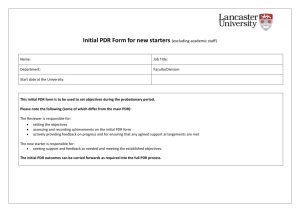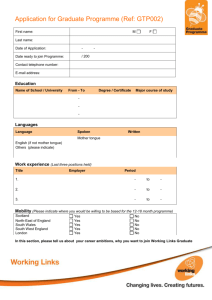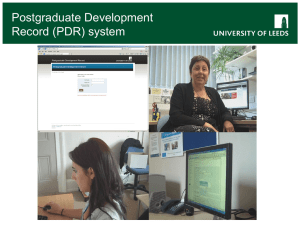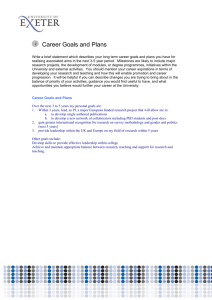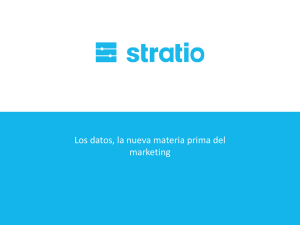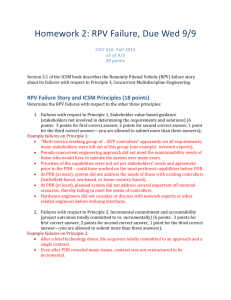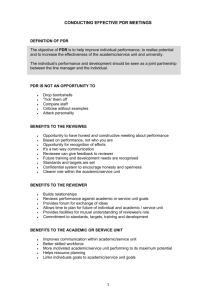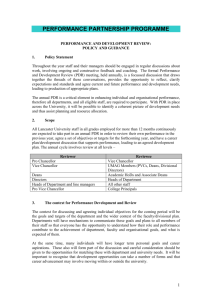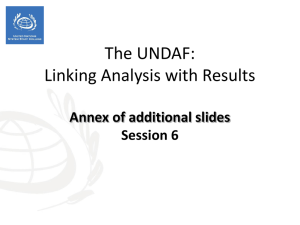Bohle, P. & Quinlan, M. Contingent work and occupational
advertisement
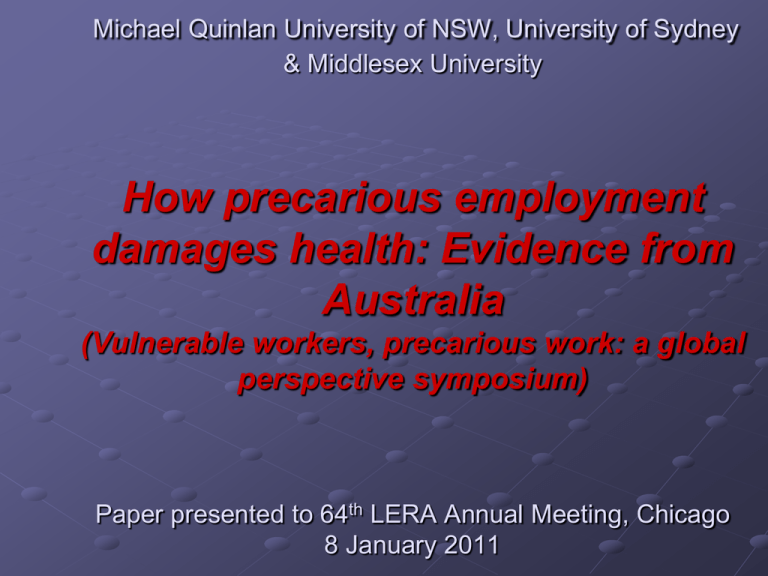
Michael Quinlan University of NSW, University of Sydney & Middlesex University How precarious employment damages health: Evidence from Australia (Vulnerable workers, precarious work: a global perspective symposium) Paper presented to 64th LERA Annual Meeting, Chicago 8 January 2011 Contents Changes to work and OHS effects of this How to explain this – four models Explaining the PDR model Evidence testing PDR risk factors Testing the model itself – preliminary results Conclusion and references Changes to Work Organisation and its health and safety effects Over past 30 years significant changes to work & labour markets including widespread business restructuring, downsizing & outsourcing, growth of temporary and insecure work (and precarious workforces including increasingly global contingent labour) Matching this shift is mounting evidence that the changes are having substantial adverse effect on occupational health and safety (eg global reviews of downsizing, subcontracting and temporary work – see references) Attempts to explain adverse OHS effects of precarious employment Karasek’s demand/control or job strain model (too task focused) Siegrist’s effort/reward model Lewchuk’s employment strain model (includes job search and social support) Sydney Uni Work Health Team (M. Quinlan, P Bohle & M. McNamara) PDR model (pressure, disorganisation & regulation) PDR model: Risk factors associated with Insecure and contingent work Effort/Reward Pressures Disorganization Regulatory Failure Spill-over Effects Insecure jobs (fear of losing job) Short tenure, inexperience Poor knowledge of legal rights, obligations Extra tasks, workload shifting Contingent, irregular payment Poor induction, training & supervision Limited access to OHS, workers comp rights Eroded pay, security, entitlements Long or irregular work hours Ineffective procedures & communication Fractured or disputed legal obligations Eroded work quality, public health Multiple jobs (may work for several agencies) Ineffective OHSMS / inability to organise Non-compliance & regulator oversight (stretched resources) Work-life conflict Example 1:Underhill study of agency workers (Rel Ind 66:3 2011) Methods Stratified sample of injured workers • Investigated workers’ compensation claims in Victoria; 198 agency & direct hire matched by occupation & year of injury (1994/95–2000/01) • Statements from injured workers, witnesses, employers & host supervisors, medical reports Focus groups and survey of agency workers • • • 147 surveyed, mostly blue collar 5 Focus groups in Melbourne & regional Victoria Mostly blue collar, plus call centres, health sector Example 1: Explaining the risk - economic and reward pressures • High levels of employment & income insecurity • • • Irregular hours (27% of injured workers) & irregular income (Eg. storeperson – average weekly wage A$276 but ranged from A$105 - $621 over 15 weeks) 45% never/rarely had continuity of placements 32% different hourly wage dependent upon host • Interchangeable - easily & quickly replaced • Worker asking for 2 days sick leave told he would be replaced by another worker Example 1: Contributing to workplace risk - economic pressures Work with injury I kept working and put up with the pain which was worse when I stopped and I didn’t mention it to anyone at the time as I was concerned my job would be terminated…I needed the money and didn’t want to attract attention by wearing a brace.” (process worker) Accept work intensification We’ve had labour hire guys pass out, working hard…was stifling hot up there (3rd level, warehouse) …they were under the impression they wouldn’t get hours, so they went flogging themselves then they passed out (storeperson, distribution, focus group) Perform more hazardous tasks The permanent staff here always get priority on the better shifts…certain jobs are regarded as easier than others, and the permanent and host casuals get priority on those ahead of the agency… (storeperson, distribution, focus group). Example 1: Explaining the risk disorganisation Characteristics of agency workforce and placement Younger workers (more than double direct hire but older workers injured earlier in a placement too) Lack of familiarity with workplace Inexperienced, inadequate training or underqualified Poor person-job match Poor communication Undermining of OHS management system Example 1: Disorganisation examples When I started my only training with the pump was being shown the on/off switch and the reversing procedure… Each driver is responsible for the ongoing cleanliness on a daily basis of any fork he is using. While permanent employees of the company use the same forklift each day, casuals can swap and change from one fork to another during the course of the day depending on the type of work being undertaken… (claims investigator). Example 1: Regulatory failure - culture of non-compliance Most examples provided are also examples of lack of compliance Lack of, poor standard of training Placements involving high risk tasks Failure to respond to OHS issues Dismissal for raising issues Underpinned by: Vulnerability to dismissal – weak employment protection Large number of small agencies & ability to avoid prosecutions Example 2: Agency workers in homecare Based on convergent interviews with 30 temporary agency homecare workers (some self-employed) in two regions of South Australia working in Aged care Disability care Troubled youth Example 2: Economic and reward pressures Employment and income irregular (eg if elderly person hospitalised) , unpaid overtime & vulnerable (if try to impose rules lose job) You might not have work for two or three months. So you think, I might as well just do this because then there won't be much work. It sort of goes off and on… There's what they call ‘the quiet times’ and that's usually around like Christmas, January. And then it sort of starts picking up. (Adelaide, female #1) You don’t always get in to a place at nine o’clock and walk out the door at 10:30, on an hour and a half job for instance. Because you potentially need to meet other needs than just what’s written on the sheet in terms of what you’re doing as a support work… You have to attend to the person’s emotional needs as well… (Adelaide, male #4) ‘As far as conditions go, there are no conditions. We have no holiday pay. We have no sick pay. We have no superannuation. We have no insurance. All those things we have to provide ourselves’ (Barossa, female #6) Example 2: Disorganisation Identified problems with risk assessment, management systems & rules (some impractical eg mobile numbers), training (amount & quality), poor design etc We were put at risk… our safety was at risk. We would be put in motel rooms with violent children that couldn’t be placed in foster care, and we had no training… Basically, they gave us no formal training. (Adelaide, female #2) You can pick up the kid at any given time when they phone you… and they’ll fail to give you some information which could be, you know – the child has sexualised behaviours, the child needs medication, the child this and that… And there’s no risk assessment. It’s, pick the ball up and run with it and hopefully you don’t fall over. (Adelaide, male #3) Probably the most risky place to work in people’s homes is usually the bathroom: slippery floors, dealing with unsteady clients, dealing with taps that aren’t set up for people or shower heads that aren’t set up for people with a disability. (Barossa, female #3) Example 2: Regulatory failure OHS regulators only beginning to address homecare, (limited guidance material, inspection & enforcement) & low unionisation, industry fragmented No workers’ compensation whatsoever. If you hurt yourself, it’s your responsibility. You need to have income insurance as a self-employed contractor, otherwise you get nothing… But as an employee, there’s workers compensation. (Adelaide, female #4) If the agency moved in and tried to change everything to suit the contractor, [the client would] either drop out of the service or go and find somebody else. So it's all pretty low key… Yes, they were turning a blind eye... Really, people are screaming out just to get a bit of respite. (Barossa, male #2) Example 3: Survey of 1541 older Australians (45-65 years) Representative population sample conducted in 2009 by phone using phase 1 of PDR model (phase 2 used in second survey undertaken in 2011) Phase 2 PDR model has better measures of disorganisation and regulatory failure 841 in paid employment (subdivided into temporary employed, ongoing employed & self employed) Predictive efficacies of PDR and ERI models in relation to work-life conflict & health(SF12), were compared, controlling for demographic variables and working hours Example 3: Survey of 1541 older workers (45-65 years): Findings Significant differences between 3 employment groups in terms of health & work-life conflict (but also independent measure of precariousness) PDR & ERI both predictive & independent When mental health was predicted by the elements of PDR, ERI and employment status, the significant predictors in the final model were: gender *, working hours*, reward pressure**, financial pressure***, and work-life conflict***(R²=.16). When work-life conflict was predicted by the elements of PDR, ERI and employment status, the significant predictors in the final model were: age**, gender*, working hours***, reward pressure***, financial pressure***, and ERI*** (R²=.30). * p< .05, ** p<.01, *** p<.001 Overall conclusion Substantial research links precarious employment to poor OHS outcomes but still trying to understand how this occurs Model building in early stages Both Lewchuk model and PDR (defining precariousness?) suggest not just employment status but relationship of this to other factors (eg interaction with living conditions & spill-over effects) PDR model is multi-factorial (but related) and evidence to support this approach PDR model appears to have elements of ERI but operates independently Need further refinement, international collaborative studies and constructive engagement re model development Also need to use multiple research methods (not just surveys, cohort studies or longitudinal panel data). Qualitative data useful too Some references Quinlan, M. & Bohle, P. (2008) Under pressure, out of control or home alone? Reviewing research and policy debates on the OHS effects of outsourcing and home-based work, International Journal of Health Services, 38(3): 489-525. Lewchuk, W., Clarke, M. & de Wolff, A. (2008). ‘Working without commitments: precarious employment and health’, Work, employment & society, 22(3): 387-406. Quinlan, M. & Bohle, P. (2009), Over-stretched and Unreciprocated Commitment: Reviewing research on the OHS effects of downsizing and job insecurity International Journal of Health Services 39(1): 1-44. Bohle, P., Finn, J., Quinlan, M. & Rawlings-Way, O. (2009) A Report on the Occupational Health and Safety of Homecare Contract Workers in Adelaide and the Barossa Region. A report prepared for The South Australian Office of the Employee Ombudsman. University of Sydney. Underhill, E. and Quinlan, M. (2011) How precarious employment affects health and safety at work: the case of temporary agency workers. Relations Industrielles 66(3):397-421.
